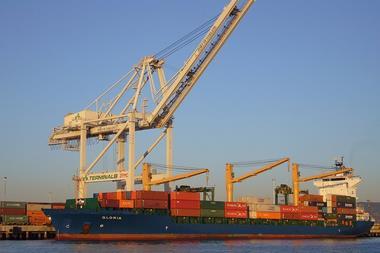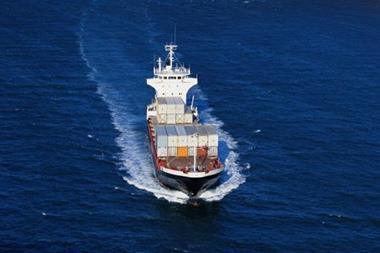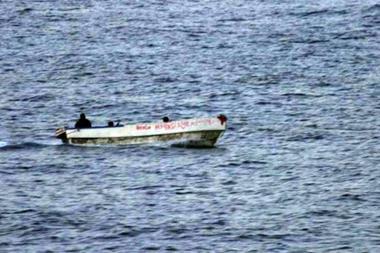Piracy in the Gulf of Aden is a huge problem, and there are not enough navy ships in the region to combat it. But one group of brokers and insurers hopes to take protection into their own hands, with what’s billed as the sector’s first private navy
As this article goes to press, there are 680 people held at gunpoint in the Gulf of Aden: the crews of 30 merchant ships hijacked by Somali pirates. It may be weeks or even months before their ransom is negotiated, and they know there is little hope of rescue. For the 20,000 ships that sail the Gulf of Aden every year, kidnap by Somali pirates is a constant and growing threat. In 2010, there were 219 attacks, 49 successful hijackings with 1,016 hostages and, already in 2011, two ships have been taken with 41 new hostages onboard.
The earliest attacks, beginning in the early 1990s, were prompted by pirates protecting their fish stocks from the international fishing boats that came into their waters, emboldened by the failed state’s lack of a coastguard. But around 2008, the importance of the Gulf of Aden to world trade began to dawn on the pirates. Hijackings shot up, from 12 in 2007 to 42 in 2008. Since then, the pirates have become more organised, more prolific and are seizing ships further out in international waters. There are now around 1,500 pirate vessels and, on any one day, there can be 60 skiffs hunting for ships as far as 1,000 nautical miles off the Somali coast. The world’s navies do have a presence here, but there are only around 40 warships attempting to patrol an area of ocean one-and-a-half times the size of Europe – an impossible task.
Anchor man
Stepping into the breach comes an unlikely hero, in the shape of insurance broker Sean Woollerson, a partner in the energy and marine division at Jardine Lloyd Thompson. He has spent a significant part of the last two years trying to establish a fleet of armed vessels that will accompany merchant ships through pirate-infested waters to discourage or repel attacks, much of it in his own time.
The Convoy Escort Programme (CEP), as it is known, could be up and running within six months as long as three things happen: the business plan is approved by the state whose flag it hopes to sail under; the shipping industry can be persuaded to back it; and funding is secured from the European Commission.
There may be a lot left to do, but this is already the culmination of an extraordinary amount of work by Woollerson and a team of security, legal and insurance experts. They have overcome logistical and security complications, wrestled with the complex laws governing the sea, and conducted negotiations with governments and military officials. Lloyd’s Syndicate Ascot will underwrite the CEP, and law firm Ince & Co is providing legal advice on a corporate structure.
It is being billed as the insurance sector’s first private navy, but Woollerson stresses that the CEP will not be a fighting force. It will be owned and overseen by the shipping industry and under the tactical control of the military. “We are just protecting the tonnage; we’re not looking to arrest pirates. We don't want to replicate what the navy is doing, we want to provide a contribution to combating the problem.”
When a ship is hijacked, the owners’ insurance broker will be one of the first people to find out. Piracy is now generally covered under the ship owner’s war risks policy, and claims can be high. Over the last two years, the industry has paid out $300m in ransoms alone. But there is usually damage to the vessel too.
“The ships come back in a terrible condition,” Woollerson says. “It can currently take more than 125 days to get the vessel released, and some have taken a lot longer. The pirates ransack them and you get a lot of growth on the hull when they’re held over that length of time.”
The charter companies that hire the ships from the owners will also pick up the cost of an additional premium on top of the owner’s war risks policy if the ship is to pass through an area that presents an enhanced risk, as determined by the Joint War Committee of Underwriters in London. The excluded area has just been greatly extended almost to the Indian coast. The premium is charged as a percentage of the total value of the ship (around 0.1%), so if the vessel is worth $50m, the additional premium will be $50,000 one way; a heavy cost on the shipping industry.
One way to bring the cost down is to ‘harden’ the ship so it’s more difficult to seize, such as by using razor wire or oil drums round the perimeter to make it harder to board. Many also carry armed guards. Alternatively, the owners or charterers of the ship may take out a kidnap and ransom policy to cover the first $3m-$5m worth of loss. These are highly confidential, but Woollerson says JLT is increasingly selling what used to be a personal lines policy to the maritime sector.
The CEP would be another way to cut the costs of these additional premiums, while offering greater certainty and protection to shipping companies and their crews. Merchant ships passing through the Gulf of Aden can already take advantage of the free Group Transit scheme provided by EU naval forces, but the CEP would offer much more intensive protection. Under the scheme, between six and 10 vessels will be within 20 minutes by helicopter of the naval vessel.
“There's a very big difference between a convoy and an escort,” Woollerson explains. “The navy do the Group Transit scheme very well but if you break down or have a problem, you're on your own. The CEP is far more intensive.”
Trust no one
Under the CEP, there would be between two and four merchant vessels per escort, travelling close together during the three-day transit of the Gulf of Aden. The business plan assumes the CEP will be used by around 25% of merchant traffic through the area – at least 460 vessels a month. Its fleet will consist of 18 fast patrol vessels with a fixed gun position, a merchant crew of four and an eight-strong security team. They would also be equipped with a long-range acoustic device to communicate with potential attackers.
“Pirates don't go around flying a Jolly Roger,” says partner at BTG Global Risk Partners Liam Morrissey, a Canadian ex-military man who has been working on the security and operational aspects of the CEP. “Quite often they approach as fishermen and it’s not until they are close to you that you see they have firearms, a ladder and a hook to attach to your ship.”
The CEP’s rules of engagement and firearms laws will be determined by the state under whose flag it sails. But Morrissey outlines a logical sequence. “When we first see the boats, we won't know if they're pirates or not, but we can say ‘we see you, don't come any closer’. If they continue to approach, we will engage in another round of dialogue and let them know they are going to be treated as hostile.
“We can take evasive action to stop the pirates boarding, get client ships going as fast as they can and zigzagging to create a swell. We could fire warning shots into the air, or into the water.
If the pirates determine to press an attack, there is the right of self-defence. Our rules of engagement will have been legally tested and follow accepted principles.”
But he believes confrontations will very rarely get that far. “Pirates are criminals; there’s no ideology behind them. Criminals are typically lazy – if they see two ships, one looking difficult to take and one much easier, they won't bother with the difficult one. If we’re telling them at 1,000m-1,500m that we are prepared, they will go and attack somewhere else. If you wait until the pirates are 100 yards from the vessel, they're already close; they’re committed.”
Learning from Iraq
Morrissey compares this deterrent effect to security guards outside shops. But a more obvious comparison is with trigger-happy private security firms in Iraq or Afghanistan. This is the most controversial aspect of the CEP, and one Woollerson and his team have spent a lot of time trying to resolve. “Unless we get the legitimacy of the international shipping community, it isn’t going to work,” he says. Morrissey adds: “The way to make it work properly is to do it completely transparently. We must be seen to be co-operating with the authorities at all times.”
The CEP will have a liaison officer responsible for communicating with the navy. The 150-strong security team will be recruited, he promises, using the most stringent vetting procedures and operating procedures.
Unlike the army, the navy of today has no experience of working with private security firms. But Morrissey says that just as there are horror stories from the conflicts in Iraq and Afghanistan, there is much good practice too. He also points out that ships are already carrying armed guards, but this is unregulated. “The absence of a scheme like the CEP will see private security firms evolve to provide a similar service. But how will clients know which companies are professional and can be trusted, and which are to be avoided?”
The CEP’s set-up costs will be around £15m, which Woollerson hopes will be met by a grant from the EU’s anti-piracy fund. Profits, he hopes, could be channelled into a fund to help rebuild social and physical infrastructure onshore in Somalia. As for the shipping industry, JLT is working with trade body the Baltic and International Maritime Council to assess the scheme’s viability.
Occasionally a note of frustration creeps into Woollerson’s voice. “There is an appetite for this, but people are generally more inclined to put up objections and problems than solutions,” he says. “But we’re not deterred, we keep going … I agree we should be lobbying the government to provide more resources, but the political will is questionable. It’s seen as a commercial problem. We’ve got the navy there, but vessels are still being taken and premiums aren’t coming down. Something needs to break the cycle.
“Everyone keeps saying ‘what’s the solution to piracy?’ This is one solution – I haven’t seen any others. We’re insurance brokers, rather than politicians or military strategists. It would be easy for us to do nothing at all, but we want to help.” IT
Hosted by comedian and actor Tom Allen, 34 Gold, 23 Silver and 22 Bronze awards were handed out across an amazing 34 categories recognising brilliance and innovation right across the breadth of UK general insurance.














































No comments yet